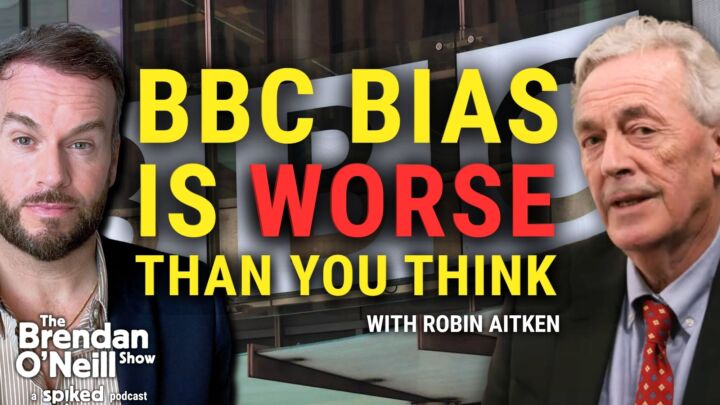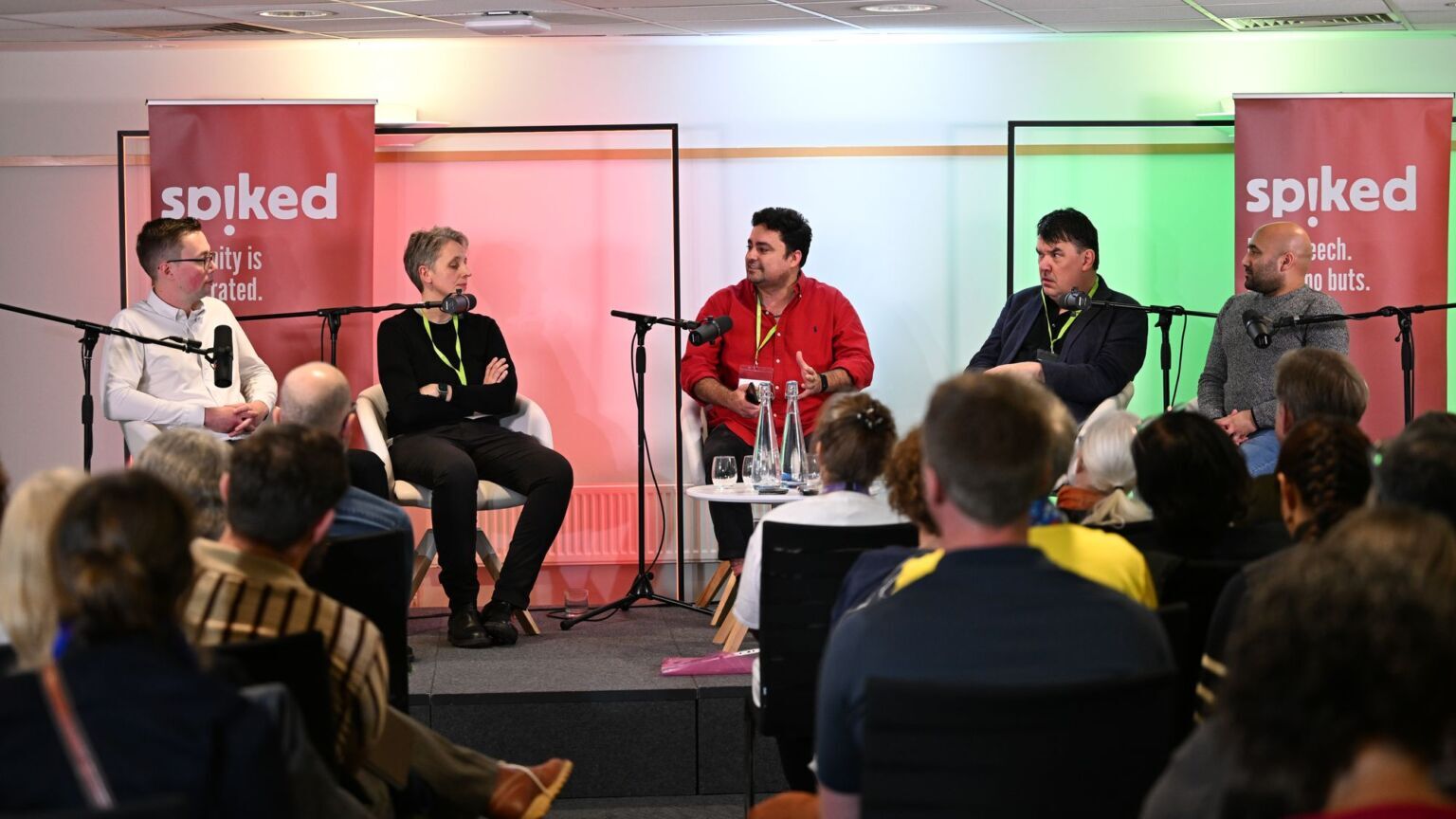Why Trump should embrace trade unions
The US president has a unique chance to make workers partners in America’s economic renewal.

Want unlimited, ad-free access? Become a spiked supporter.
Beneath the bluster of US president Donald Trump’s bold and often unpredictable tariff strategy lies a golden opportunity – a chance to bring labour unions on board with his America First vision. It’s a move that would not only benefit American workers, but also help revitalise a faltering middle class and redefine the social contract . And all the while, it would drive Democrats up the wall by weakening their ties to another of their traditional strongholds.
America needs more than protectionist trade policies to address its current malaise. A 2023 Gallup poll found 78 per cent of Americans believe their country is on the wrong track. Young people are especially discouraged – a majority of those aged 18 to 24 think they’ll be worse off than their parents. Pessimism runs deep among younger generations.
A GOP presidency encouraging a labour-union revival would certainly represent a break with tradition. But Trump, still buoyant from his second-term victory, has never shied away from flipping conventional Republican positions – particularly when it lets him outmanoeuvre opponents. Such reversals are a hallmark of consequential leaders. Think of Rome extending citizenship to its allies or of Napoleon signing a concordat with the pope.
Reviving labour unions is important for America’s future prosperity. From 1940 to 1980, an unlikely alliance between labour and government helped create an era of unprecedented prosperity, job security and civic participation. That surge in upward mobility – particularly for manufacturing workers – was built on New Deal foundations that gave workers both a stake and a voice in the economy.
But over the past four decades, that foundation has crumbled. The American middle class, defined as the middle 60 per cent of income earners, accounted for 52 per cent of earnings in 1980. Today, it’s just 43 per cent. Worker productivity has surged by 60 per cent, but wages have barely kept pace with inflation. Meanwhile, costs for housing, healthcare, childcare and education have skyrocketed since the 1980s. The cost of college tuition alone has jumped 1,200 per cent.
The reasons are manifold: globalisation, automation, digital disruption, the evolution towards a service economy and the explosion of gig work. But a major turning point came in the 1980s, when corporate America became aggressively anti-union. Wall Street’s fixation on short-term gains led to offshoring, mergers and union-busting. Union membership plunged from 35 per cent in the 1950s to just 10 per cent by 2023 – and only six per cent in the private sector.
For American workers today, especially those at the lower end of the pay scale, there’s little cause for optimism. The rise of AI and continued automation threaten white-collar jobs once thought immune. And many younger Americans see work as insecure, unrewarding and exploitative.
Revitalising labour unions could address this sense of malaise. Their past achievements didn’t stop at wage hikes. Unions brought about employer-sponsored healthcare, pensions, paid vacations and safer workplaces. These gains fuelled a consumer-driven economy, reduced inequality and enabled widespread homeownership and college access.
Equally important, unions once served as hubs of civic life. They provided training programmes, sports leagues, social events and a sense of shared identity. They tethered companies to communities and workers to industries. In today’s fractured, low-trust society, that social glue is sorely missed.
Reimagining unions for the 21st century won’t be easy. It will require forward-thinking legislation, incentives for long-term profitability and employee equity, and a new kind of collaboration between labour and management. Key issues will include protections for gig workers and independent contractors, safeguards for workers impacted by AI and creative solutions for remote and freelance employment.
But unions must rise to the occasion, too. Their decline wasn’t only due to external forces. After the Second World War, instead of expanding into growing sectors like healthcare, retail and tech, many unions focussed narrowly on preserving existing gains. Bureaucratic, top-heavy and occasionally marred by corruption, unions lost credibility with workers and the public.
To regain relevance, unions must modernise and reconnect with a rapidly evolving workforce. That includes organising younger workers, addressing workplace tech challenges and rebuilding trust with the rank-and-file.
A rejuvenated labour movement could also help revitalise skilled trades, from plumbing to electrical work, which remain essential to rebuilding America’s crumbling infrastructure. Through partnerships with schools and local governments, unions could help restore these skilled paths to economic security. President Trump already seems to be thinking along these lines, given his suggestion of redirecting $3 billion in federal funding from elite universities to trade schools.
Trump’s first term featured a mix of pro-worker and anti-union policies. His renegotiation of the North American Free Trade Agreement into the US-Mexico-Canada Agreement included stronger labour protections and a minimum wage. Yet his administration also opposed the Protecting the Right to Organise Act and backed union-unfriendly rulings at the National Labour Relations Board.
Now, in his second term, Trump has a rare chance to define a lasting legacy. With characteristic boldness , and perhaps a well-timed break from GOP orthodoxy, he could launch a sweeping initiative to make American workers true partners in national economic renewal. That means tying innovation to upskilling, linking corporate profits to employee gainsharing and ensuring that working Americans once again feel a sense of upward mobility and national purpose.
In doing so, Trump would burnish his America First credentials, start to rebuild the damaged middle class and, above all, repair a very real and deteriorating rip in America’s social fabric.
That wouldn’t be such a bad legacy for the abrasive billionaire the left maligns as ‘only caring about the rich’.
Paul Maglione is an American writer and entrepreneur based in Europe. Follow him on Medium here.
You’ve read 3 free articles this month.
Support spiked and get unlimited access.
Help us hit our 1% target
spiked is funded by readers like you. It’s your generosity that keeps us fearless and independent.
Only 0.1% of our regular readers currently support spiked. If just 1% gave, we could grow our team – and step up the fight for free speech and democracy right when it matters most.
Join today from £5/month (£50/year) and get unlimited, ad-free access, bonus content, exclusive events and more – all while helping to keep spiked saying the unsayable.
Monthly support makes the biggest difference. Thank you.










Comments
Want to join the conversation?
Only spiked supporters and patrons, who donate regularly to us, can comment on our articles.